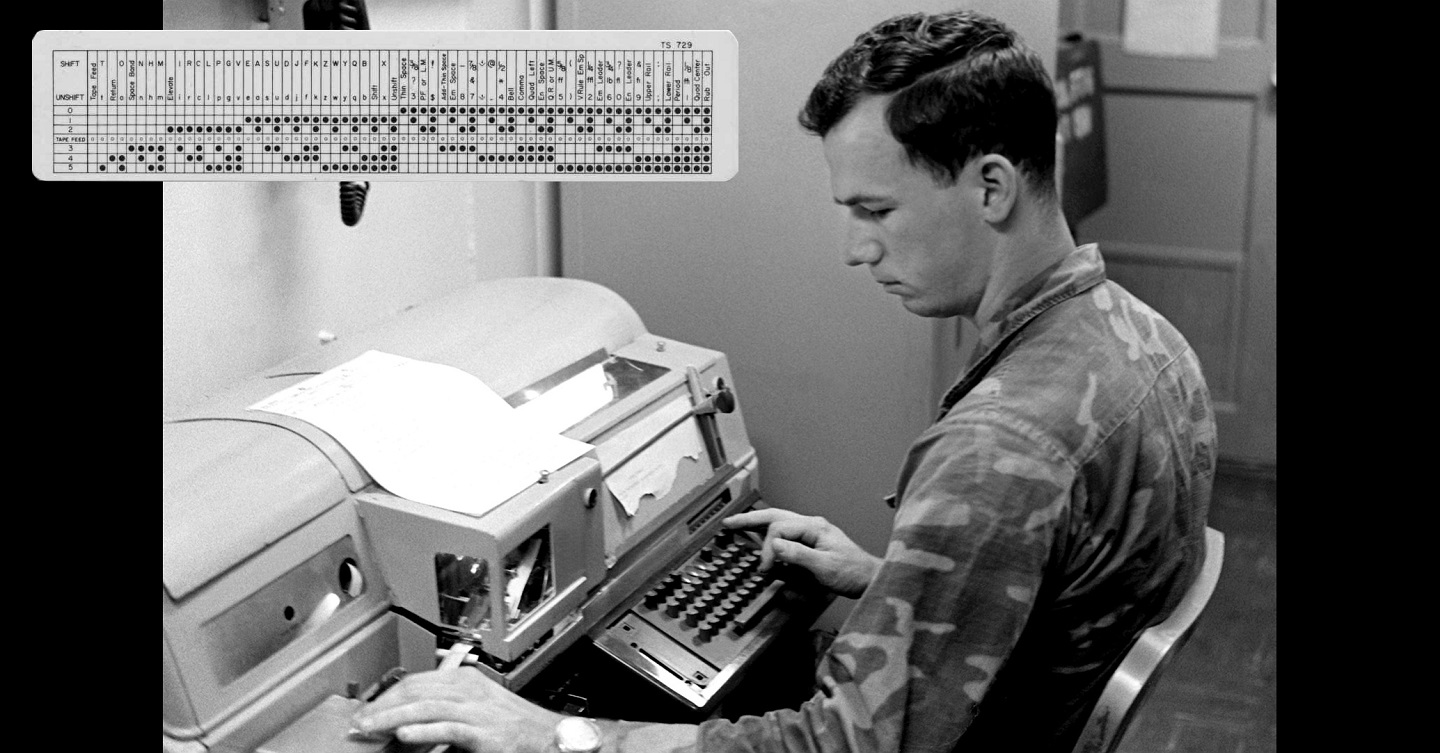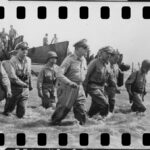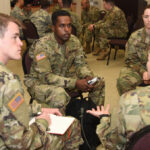
This practice makes sense when the medium is stone and the drafting instruments are a hammer and chisel
Take any General Staff – and imagine how much value would be added if that staff instantly became 35 percent more efficient, increased reading speed by 13 percent, and, as a whole, comprehended written orders 22 percent easier—at no cost? Even the best professional military education programs do not come close to that return on investment. However, the US military continues to accept sub-optimal staff performance without justification. OPERATIONAL ORDERS (OPORDS) AND EXECUTE ORDERS (EXORDS) ARE STILL PUBLISHED IN ALL CAPITAL LETTERS WITHOUT A COMPELLING REASON TO CONTINUE THE PRACTICE AND WITH QUANTIFIABLE DROPS IN EFFICIENCY, READING SPEED, AND EASE OF COMPREHENSION.
How did we get here? Historically, Latin words carved into stone used block letters called “roman square capitals.” Roman square capitals are “majuscule letters,” meaning letters with sharp angles and a uniform height. This practice makes sense when the medium is stone and the drafting instruments are a hammer and chisel. By contrast, smaller script with more curves and variable heights—”miniscule script”—was used for writing with a quill. Scripts did not start to use a combination of majuscule and minuscule letters until about the 8th or 9th century, mostly for decorative purposes. For the next 500 years, stylistic use of mixed case lettering evolved into a system that resembles what we use today. Moveable type appeared alongside and is an integral component of the printing press. Moveable type was kept in cases. The case with the more commonly used letters is placed closest to the typesetter. The case with the less commonly used letters is kept above it. This typesetter placement of the upper and lower cases of moveable type gave rise to the terms upper- and lower-case to refer to letters. The modern rules of capitalization (and spelling, for that matter) were not fully developed until the 19th century. (This fact explains the apparently random capitalization in both the U.S. Declaration of Independence and the Constitution. When those documents were drafted, capital letters were commonly used for emphasis.)
Modern, proper use of capital letters is complex. In American English, it is customary to capitalize the first word of every sentence, the standalone letter “I,” proper nouns, some words that follow a colon, some abbreviations, and for most initialisms and acronyms. The military adds a few specific capitalization nuances including capitalizing entire words (not just the first letters) of the names of ships, classification headers, and the names of operations. And then there are EXORDs and OPORDs, many of which are still published in ALL CAPS. Exclusive upper-case lettering appears distinguished on the stern of U.S. ships, conveys volume or intensity in text messages, offsets the names of military operations, promotes visibility of license plates, and increases sales of children’s breakfast cereal. But what is the justification for use in military orders?
Historically, there was a good reason for publishing orders in all caps—it was the only option. In the 1850s, teletype machines only had capital letters. Early computers used 6-bit code that was only capable of upper-case letters. Starting in 1960, 7-bit computer code enabled both upper- and lower-case letters, but new technology had to interface with legacy systems that could handle only the upper-case kind. Additionally, transmission speeds in previous decades were so slow that every byte counted – and mixed-case messages required more memory. The Navy did away with all caps on official messages in 2013 — by publishing a message in all caps. One last time for posterity, perhaps. The Navy finished replacing all legacy systems requiring capital letter transmission in 2015. Despite the passage of seven years since the last all caps transmission equipment existed anywhere in the Navy, the DoD is still using majuscule text in OPORDs and EXORDs.
With technological advances rendering all-caps a vestige of history, there are still some who insist that writing in all capital letters has advantages. These arguments boil down to three reasons: 1) quality of copies, 2) conveying urgency, and 3) tradition. Historically, the contention that all-caps text is easier to read on degraded scans and copies had merit; however, the quality of modern-day electronic storage media, scanners, and printers moots that argument. Urgency is a specious argument. If all capital letters are required for a higher headquarters OPORD or EXORD, there are far more corrosive command issues that need to be addressed and improving the readability of orders is not a primary concern. While no one is arguing orders in all caps is intended equally emphasize the entire order, all caps drafting creates a situation that nothing in the order may receive any emphasis via capital letter offset—while significantly diminishing readability. Using all-caps sparingly would enable emphasis in orders via strategic and proper use of capitalization (e.g. the name of an operation or a classification header). However, evidence supports that even a slight overuse of all-caps leads to a measurable drop in understanding. A study found that 77 percent of contracts had at least one clause typed in all capital letters and that understanding of the capital letter clauses dropped 29 percent relative to sentence case.
All sub-optimal traditions need to be disposed of, co-opted for another purpose, or relegated to garrison.
Last, the tradition argument also fails. A military tradition has no place on the battlefield if the tradition reduces effectiveness. All sub-optimal traditions need to be disposed of, co-opted for another purpose, or relegated to garrison. Close-order drill, Fife and Drum Corps, mounted cavalry, swords, and elements of dress uniforms, all at one point had bona fide purposes on the battlefield. It is one thing to make an adjutant stumble through an all-caps birthday message at a Marine Corps Birthday Ball in the name of tradition; quite another to accept degraded communications between the Chairman of the Joint Chiefs, the Combatant Commanders, and/or major subordinate commanders and their staffs simply because capital letters are the way it has always been done.
During World War II, a British officer armed with Boer War cannons and charged with static coastal defense, sought efficiencies to improve his battery’s firing rate. Prior to firing, two members of the crew stopped all activity and came to attention—but nobody knew why this was done. After significant research, an old artillery officer finally realized, “they are holding the horses!” The obsolete and inefficient practice of “holding the horses” continued even though there were no horses. What commonality is there between simulated horse holding and writing in all capital letters? They are both practices that accept unjustified degradation to military effectiveness. Since a large library of OPORDs and EXORDs serves as source material for future OPORDs and EXORDs and Microsoft Word conversion from all capital letters to proper mixed case is labor intensive, and inertia is powerful, a transition to mixed case will not occur naturally. The DoD needs to “let go of the horses” and foster higher efficiency and comprehension by directing sentence case as the only acceptable format for OPORDs and EXORDs.
Sentence case is the commonly accepted upper- and lower-case character convention in use today. The enhanced readability of sentence case is generally attributed by psychologists to the recognition of total word shapes. Prior to this prevailing theory, some psychologists attributed the readability of a word to the shapes of the individual letters. Under this hypothesis, the variation in letter height, width, and spacing aids cognition relative to all-caps, which is uniform in height, width, and spacing. A minority of psychologists disagree with both of these theories, asserting that recognition of any word is simply a matter of practice. Regardless of which underlying psychological theory is most accurate, sentence case recognition, comprehension, and understanding will always outpace similar all-caps metrics given the variability in the text and the prevalence of sentence case use in modern society.
What is the harm to permitting continued use of all caps? It is quite substantial. Assuming arguendo that every staff officer reads every sentence of every OPORD and EXORD, in the aggregate, the opportunity cost associated with substantial decreases in reading speed, comprehension, and efficiency represent a significant self-imposed handicap. Additionally, the interface between all caps writing and word processor spelling and grammar checks is buggy, leading to increased typos and decreased understanding. These inefficiencies all slow and degrade the observe/orient portions of the OODA loop. Any delay in OODA loop cycling increases the likelihood of being outpaced and outmaneuvered by an adversary. Continuing all caps drafting is not the equivalent of maintaining proficiency with a compass. While it is foreseeable that GPS may become unavailable, it exceedingly unlikely to degrade communication systems to the point they would lose the ability to transmit sentence case but still retain an all-caps transmission capability. However, if an adversary were to somehow force a technological reversion of some U.S. assets back to 6-bit teletype, the transition to all-caps is much simpler. For example, in Microsoft Word, it took under ten seconds to convert this entire manuscript to all caps. Since all caps orders persist from the CJCS-level down and laterally across Combatant Commands, the Department of Defense is likely the only entity that can promulgate guidance that would effectuate broad and lasting change. It is time for the Department of Defense to mandate sentence case.
Jeffrey Amell is an active duty Major in the U.S. Marine Corps serving as the Senior Defense Counsel aboard Marine Corps Base Hawaii. He holds a Juris Doctorate from the University of Denver, a Masters in Law from The Army Judge Advocate General’s Legal Center and School, and a Bachelor of Arts in Political Science from Colorado State University. Major Amell is a current student in Marine Corps non-resident Command and Staff College.
Gregg Curley is an active duty Lieutenant Colonel in the U.S. Marine Corps serving as the Officer in Charge of the Legal Services Support Team, Marine Corps Base Hawaii. He holds a certificate in Strategy and Policy Development from the U.S. Army War College. Lieutenant Colonel Curley will assume Battalion Command in July of 2022.
The views expressed in this article are those of the author and do not necessarily reflect those of the U.S. Army War College, the U.S. Army, U.S. Marine Corps or the Department of Defense.
Photo Description: A Marine teletype operator puts in long hours sending and receiving messages for the 32nd Marine Amphibious Unit circa 1979; Inset – 6-bit teletypesetter code
Photo Credit: CPL R.L. Jackson, USMC




